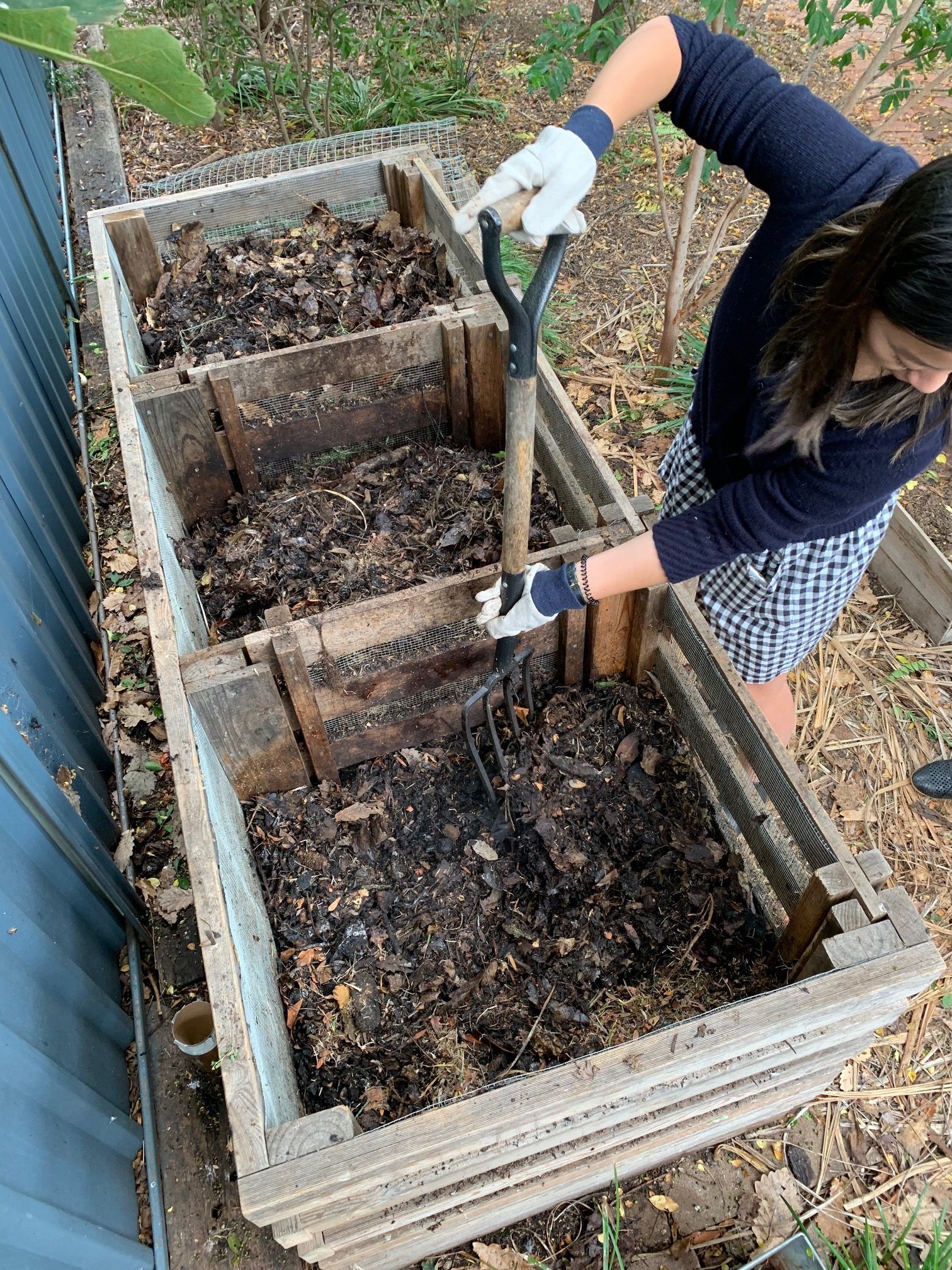
Keep on turning for best compost and lowest greenhouse gas emissions
Some people may be surprised by the quantity of kitchen scraps that the HCC heaps can process. The scraps from over 50 households are added to the heaps every week, along with a bunch of dry leaves to balance out the carbon and nitrogen. This amounts to a large volume of material, bay no. 1 can easily fill in a busy weekend. Yet as long as I keep the whole thing turning we will not reach capacity and there is still room for more scraps. That is because it only takes about a month for those fresh scraps to be ready to use as compost in local gardens. How are the HCC heaps so efficient? It’s about keeping the mix right but it’s also due to the hours I put in each week turning the heaps.
Once bay no. 1 is full it gets turned over into bay 2. Bay 2 can sit for a day or so and will reduce in volume a little as all of the critters, fungi and bacteria do their thing. But it won’t be long till I disturb their world once more by turning over bay 2 into bay 3. And once bay 3 is full? Do I move it all over into bay 4? Not yet! Nope, I get a bit more of a workout and actually start shifting bay 3 material back over into bay 1. Sometimes this feels like I must be a sucker for punishment, so it was great to find this recent paper backing up why I go to the extra effort.
In the paper, by Yang and others, they showed that mixing in mature compost is very beneficial when composting kitchen scraps. Not only are you providing inoculum of the good bacteria and fungi onto your veggie scraps and leaves/dry carbon materials, you’re also avoiding the generation of greenhouse gases. That’s great! as that is exactly the main motivation behind the HCC. All of the organic wastes that currently go to landfill release greenhouse gases when disposed of in that way. As opposed to composting with plenty of available oxygen the scraps in landfill instead ferment and produce methane and nitrogen gases, very potent greenhouse gases. Compost heaps can also generate these gases, especially if they are not well managed. If a compost heap is producing unpleasant smells then it is releasing quite a lot of methane also (which has no smell). What the study by Yang and colleagues showed is that not only is turning of the compost needed, but also adding mature compost into the mix is very beneficial. They found that almost 70% of the greenhouse gases that would otherwise be released could be avoided by mixing in mature compost.
I already knew that the extra turning was a great thing to do but it’s lovely when some scientists have put in the work to quantify just how great an advantage it can be. One of the other benefits of shifting bay 3 material back to the start of the process is that I get to retain and manage moisture levels. Once a nice thick layer of fresh veggie scraps has been added to bay no. 1 (10-40L or so) I pile an equally thick layer of somewhat matured compost from bay no. 3. As the veggie scraps start to ‘cook’ in the middle of the heap condensate travels upwards and helps to re-wet the compost from bay 3 which was starting to dry out. It’s a rare occasion that any part of the compost heap needs to be watered.
I think there are also microbial ecology benefits of keeping the compost on the move. When it comes to the bacterial part of the community the interactions are certainly on the micro scale, with different sub-communities living on a fraction of banana peel as compared to another community living on the bread crust a centimeter away. ‘Challenging’ these communities by frequent mixing keeps the overall community diverse and active in many different ways. Let’s hope someone carries out some quantitative science on those fascinating aspects soon!
For now, I’ll get back to turning the compost 😉

